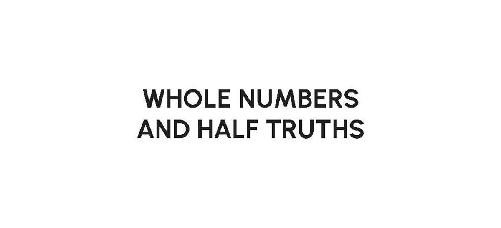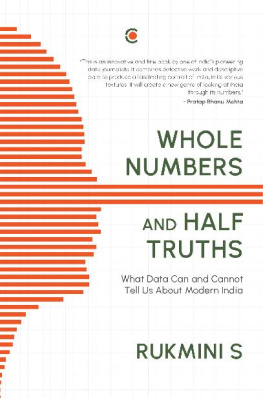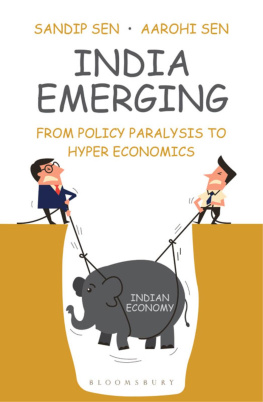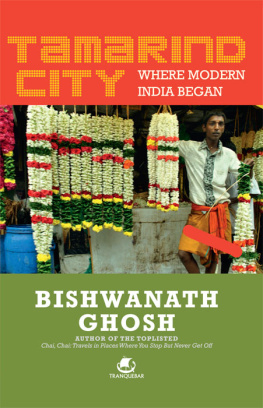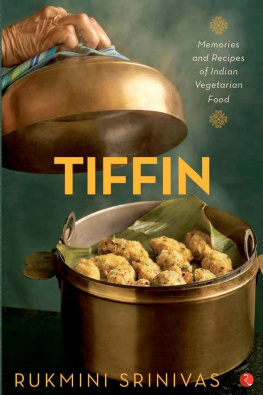First published by Context, an imprint of Westland Publications Private Limited, in 2021
1st Floor, A Block, East Wing, Plot No. 40, SP Infocity, Dr MGR Salai, Perungudi, Kandanchavadi, Chennai 600096
Westland, the Westland logo, Context and the Context logo are trademarks of Westland Publications Private Limited, or its affiliates.
Copyright Rukmini S., 2021
ISBN: 9789391234676
The views and opinions expressed in this work are the authors own and the facts are as reported by her, and the publisher is in no way liable for the same.
All rights reserved
No part of this book may be reproduced, or stored in a retrieval system, or transmitted in any form or by any means, electronic, mechanical, photocopying, recording, or otherwise, without express written permission of the publisher.
For Thatha (VVS), Nilavan and Kanalithe three greatest lovers of books that I have known.
CONTENTS
How do the nuts and bolts of Indian democracy work? It would seem that we have all the answers to that question. Newspapers and nightly TV shows are full of experts explaining to you what Indians think, feel and do; you can hardly take an Uber pool or an overnight train without someone reeling off their pet theory about what Indians are really like. The problem is most of these established narratives are pure fiction masquerading as fact.
Indias statistical architecture is vast and impressive. Since the early part of the twentieth century, Census enumerators have fanned out across the country with the grand objective of capturing every single Indian (see chapter 9), National Statistical Office surveyors head out with forms to capture the exact number of eggs that every household in their massive national sample has eaten in the last week (see chapter 6), the National Crime Records Bureau aggregates every single First Information Report from every police station in the country, and the National Family Health Survey tries to discreetly ask women if they have ever been assaulted, even if they never reported it to the police (see chapter 1). The Civil Registration System can capture births and deaths and tell us how many children women are having in Kerala compared to Bihar (chapter 8), as well as how many Indians die every year, how many deaths go uncounted and how many excess deaths COVID might have caused (see chapter 10).
Private research organisations like the National Council for Applied Economic Research conduct massive surveys that allow us to check if the government is getting its data right and answer questions that the government never asks, like how much money Indians make (see chapter 5) or who they choose to marry (see chapter 4). Organisations like the Centre for the Study of Developing Societies with fifty years of opinion polling experience conduct world-class surveys about voter intentions and electoral decisions (see chapter 3). Newer private surveyors like the Centre for the Monitoring of the Indian Economy can provide high-frequency panel data on the economy and employment even during a national lockdown to create an early-alert system in times of crisis (see chapter 7). Private organisations like the Lok Foundation invest significant money into large surveys that give us never-before insights into how Indians think about working women, about people from other castes, about the future of liberalism and even democracy (see chapter 2).
Yet, even with this wealth of data, people build inaccurate narratives around how India works, either without looking at the data or because of bad data. They assume there are vote-banks where none exist. They assume people vote for reasons that dont actually guide their decisions. They decide they are middle class with little basis. They imagine urban explosions and migrant floods with little reason. These narratives, repeated enough times, become fact and political fodder.
Part of the problem is that statistics can be unintelligible, out of date, hard to find and harder still to communicate. But the other part is that statistics alone dont tell us everything. They need context, interpretation thats free from ideological spin, and to be held up to the light.
I have reported on stories small and big from the ground across the country since 2004 and worked on Indian socio-economic data for over a decade now, and I finally see the connectionshow the processes and people I encountered on the ground aggregate into statistics, what these numbers mean in terms of actual lived experience, what the numbers are either failing to capture or are obfuscating, and how to fix these gaps in our understanding.
Numbers enlighten, empower, elevate. Numbers can help us make sense of modern India. Numbers can help us anticipate the future. But numbers do not exist in a rarefied space. The push and pull of political and social forces around the world dont leave numbers unaffected.
This is a country of wonder and beauty, of idealism and sacrifice, of extraordinary leaps of faith, and people who move mountains. Numbers, far from being cold and unintelligible, can capture much of this nuance, this humanity, that pre-packaged narratives sometimes flatten out. If Indian statistics have seemed impenetrable, that is a failing of the community that produces data and works with it. Everyone should hear the stories numbers tell, and then make up their own minds about the country.
The last few years have seen a vicious polarisation colour not only most news reporting, but also the world of data. Part of the reason people find it hard to make sense of the world using numbers is because they first need to turn the tin upside down to check on the manufacturer before opening it. They need to know who produced it, what it missed, and what the other side is saying before they can be sure this is the whole truth. Democracy is best served by those who engage with it critically. But blanket suspicion is problematic and harmful. Knowing how to engage critically with data will only help strengthen democracy. This book is a toolkit.
All assertions in this book, except where stated as an opinion, are backed with footnoted data. In all cases, the most recently available data has been used and the year of the Census, survey, or study clearly mentioned. Where official data is available, the book uses official sources. The book relies heavily on data from the Census, National Statistical Office, National Family Health Survey, National Crime Records Bureau, Election Commission of India, National Health Mission, Civil Registration System and Sample Registration System.
The only private sources used are high-quality, well-regarded sources with transparent methodology that are for the most part publicly available. These include the India Human Development Surveys, the Lokniti-CSDS surveys, the Lok Survey with the University of Oxford and the Centre for the Monitoring of the Indian Economy, the CMIEs Consumer Pyramids Household Survey and the Social Attitudes Research survey. No small-size sample surveys, online surveys, or surveys where the raw data was not available for review have been used.
Except where mentioned, data refers to nationally representative data. In cases where the data has flaws or needs additional interpretation, this is clearly mentioned in the main text of the bookthere are no hidden caveats or loopholes that are kept from the reader.
